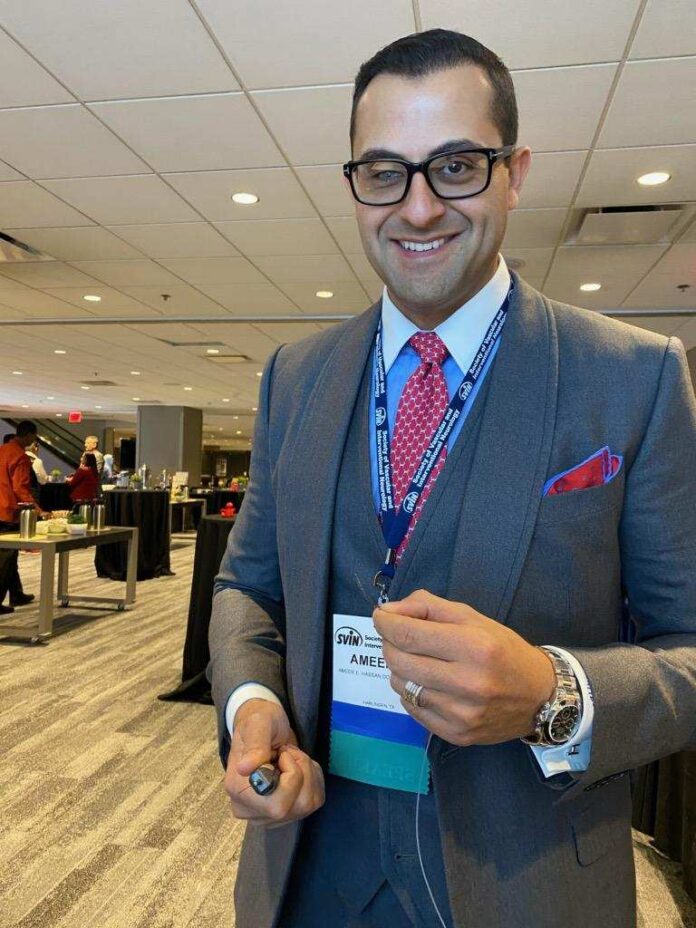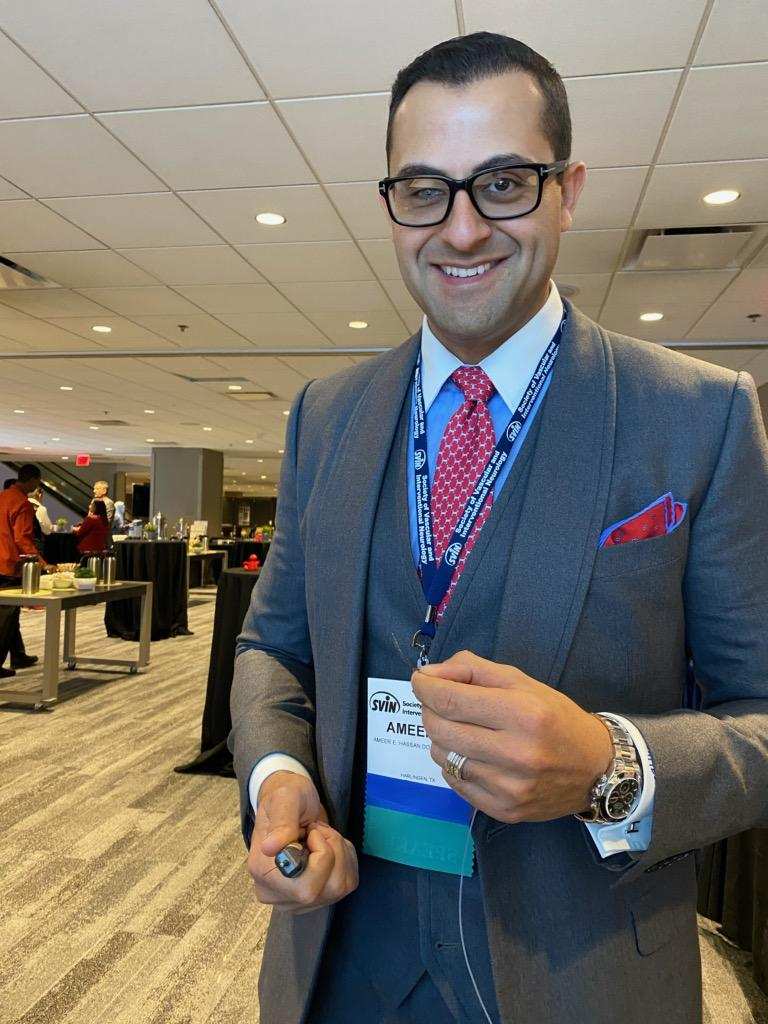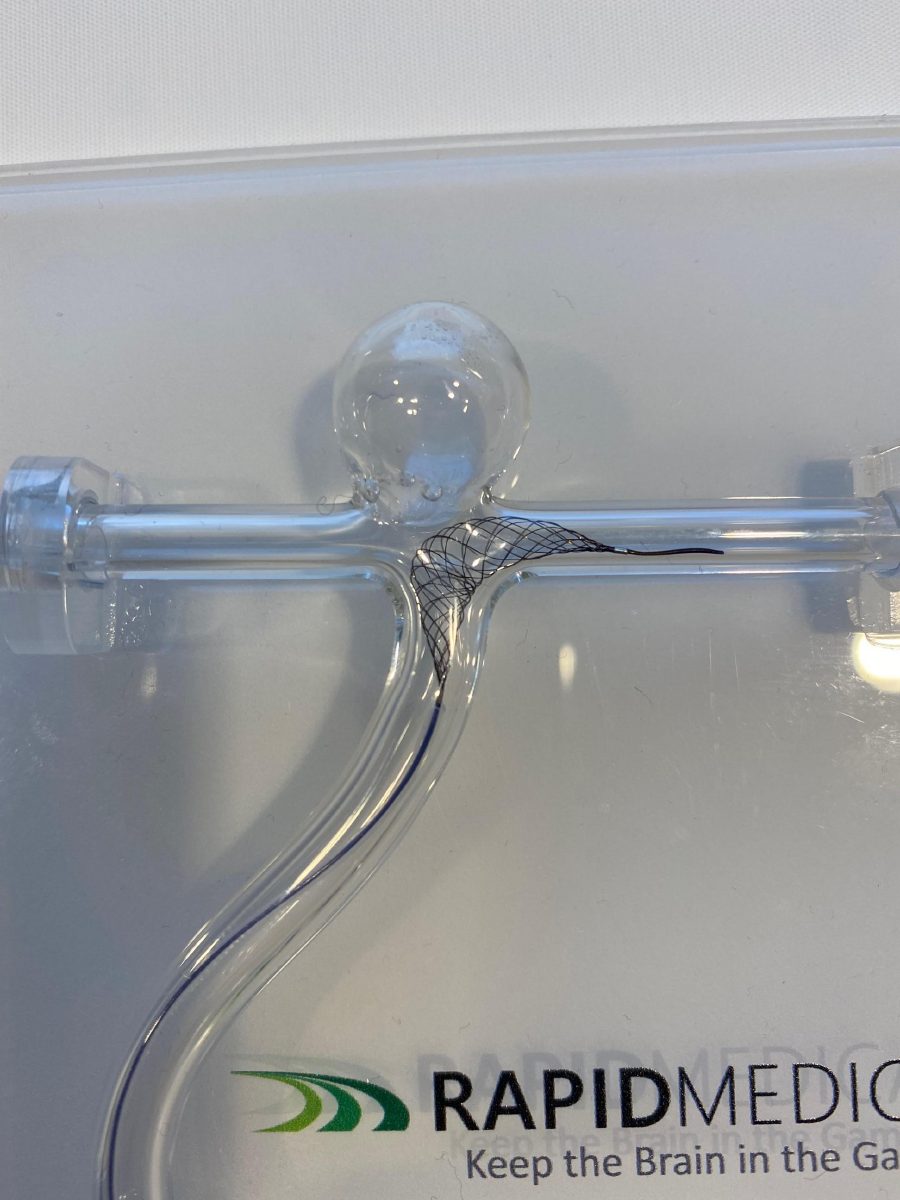HARLINGEN — No more permanent stents.
No more blood thinners.
A new device now makes treatment of wide-necked aneurysms safer and more efficient. It’s called the Comaneci adjustable remodeling mesh, and Dr. Ameer Hassan is delighted at its success.
“We were the first in Texas to use it,” said Hassan, head of the neuroscience department at Valley Baptist Medical Center.
The procedure was first performed here in September.
A wide-necked aneurysm is a condition in which a portion of a blood vessel in the brain weakens and balloons outward. If the aneurysm is left untreated, the patient could suffer a hemorrhage, which has a 60 percent mortality rate.
The Comaneci device is a removable stent, and because it’s removable, patients don’t have to be on aspirin and Plavix after being treated for an aneurysm.
Typically, aneurysms have been treated by placing platinum coils inside to seal them off, Hassan said. Depending on the size of the aneurysm, more than one coil may be used.
“Historically we were always able to treat these cases at Valley Baptist since I’ve been here,” Hassan said. “We either used the pipeline device or other kind of stent like neuroform. These stents would work as scaffolds so whatever you put in the aneurysm stays in the aneurysm.”
The problem with this, however, was the need to keep the stent in place and put the patient on aspirin and Plavix for six to 12 months. They could then be taken off the Plavix, but they had to stay on an aspirin regimen indefinitely.
Blood thinners increase the chance of a hemorrhage in any part of the body. Some patients may have bleeding stomach ulcers or hemorrhoids which may be aggravated by blood thinners.
With the Comaneci device, Hassan can place it where it needs to go, expand it, place the coils in the aneurysm, collapse the device and pull it back out.
“This new device allows us to treat those wide-neck aneurysms with a temporary scaffold,” Hassan said. “So when I’m deploying the stent, it works as a support for the coils in the aneurysm.”
The only thing left behind are the coils to seal off the aneurysm.
“We were excited because we were the first to use it in Texas and the patient did very well,” he said.
SIGNS YOU’RE SUFFERING AN ANEU
SIGNS YOU’RE SUFFERING AN ANEURYSM
Headaches
Vision problems
Nausea and vomiting
Neck pain
Seizure or loss of consciousness
Drowsiness or confusion
HOW TO PREVENT ANEURYSMS
Don’t smoke
Control blood pressure






